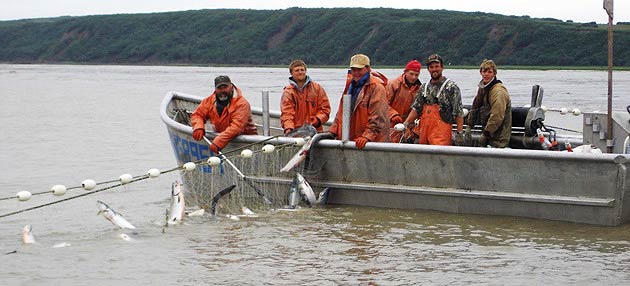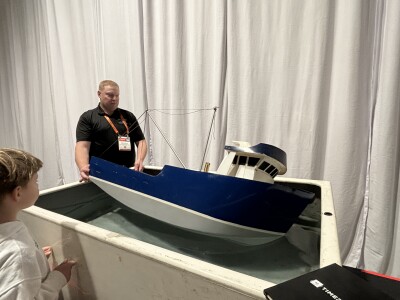Optimism is the word that best sums up the attitude among most Alaska salmon fishermen after a good season, according to people in the business of buying and selling permits and boats.
Most fishermen in major regions ended up with good catches and dock prices were up from recent years. That’s pushed up permit prices, notably, at the bellwether fishery at Bristol Bay where drift net permits have topped $200,000.
“The highest has been $210,000. But it's a pretty tight market,” said Maddie Lightsey, a broker at Alaska Boats and Permits in Homer, Alaska. “A lot of fishermen had a great year out there and made a lot of money. But buyers are hesitant to pay these really high prices. Many are hoping it's a pretty short spike.”
“Meanwhile, sellers are holding out for high prices, while at the same time expressing concerns over increased tax burdens if they sell this year following such a good season. Those two things combined have really restricted the market and there haven't been that many sales,” she added.
“There is plenty of interest in Bristol Bay permits and boats, but the permit price is really high so right now there is a lot of talk,” echoed Lisa Gulliford at Permit Master in Tacoma, Wash. Permit values are published monthly by the state Commercial Fisheries Entry Commission (CFEC) and reflect the average of sale prices over the last three months. They need at least four transactions to calculate an average and some permits don't sell frequently enough to do that, so they have to incorporate sales from prior to three months ago, explained Lightsey.
“But the market changes so quickly that CFEC's permit prices are typically off, either on the high or low side. The value of salmon permits is quite literally whatever a buyer is willing to pay for it!” she added.
Other salmon fisheries also are attracting interest “which is good news and means that optimism is spreading throughout the fisheries. Permits that have been relatively quiet for a few years are now getting inquiries,” Gulliford said, adding that “troll permits in Southeast are making a comeback.”
Before the summer season, power troll permits were selling in the low $20,000s and are now in the $28,000-$30,000 range. Movement in other Southeast salmon permits, however, is lackluster, added Lightsey.
“Before the season drift permits were selling for around $55,000 and our lowest asking price now is $65,000 but we’ve had no offers,” she said. “On the seine front, we sold a permit for $140,000 after the season ended, which was the first I believe since 2019. It’s a really slow market down there.”
Likewise, permits at Prince William Sound have yet to gain much traction despite a great year for pink salmon.
“A few drift permits have sold in the $110,000 range. No seine permits have sold yet that I'm aware of. And quite a few folks are moving from Prince William Sound seine to Bristol Bay,” Lightsey added.
Conversely, drift permits at Cook Inlet ticked upwards from lows of $16,000-$17,000 to $30,000.
“A lot of folks had the best season they've had in years. Not everyone, of course, but many broke six figures,” she said.
Likewise, seine permits at Kodiak have been on a steady rise from the mid-$30,000 range up to $40,000 since the season ended.
At Area M on the Alaska Peninsula, drift permits are rebounding in the high $150,000 to mid-$160,000 range after topping $200,000 in 2019 and then dropping to no sales in 2020.
Lightsey said she hears a lot of concern from fishermen over climate change and salmon bycatch in trawl fisheries, but it’s not enough to deter them from buying permits.
“It’s kicking them into gear to take action, which I think is great,” she said. “I think a lot of this new guard of fishermen are young and energetic and incredibly driven and dedicated to sustainability and preserving the future of their industry. Together with the old guard, they're really making a difference. They're writing letters and networking and forming advocacy groups and all those things are coming together and instilling a sense of pride and ownership in their fishery and making them more inclined to invest in it
Another indicator of confidence – both brokers said boat sales are brisk.
“I think good things are happening!” said Gulliford.
Alaska’s statewide salmon catch this year topped 222 million, 32 million more fish than projected.







